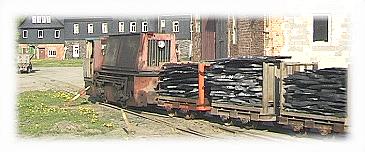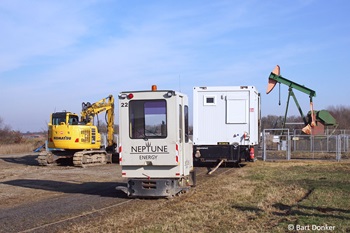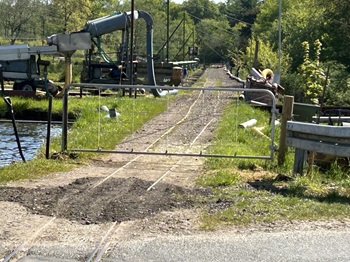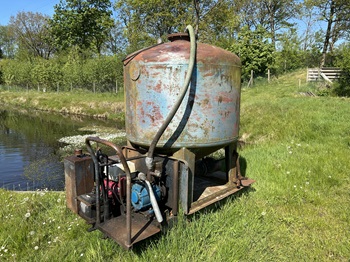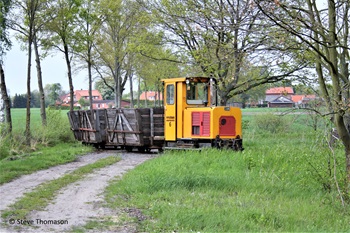GERMANY: May 2025
Westermoor/Küstenkanal Region;
Surwold Baustoffwerke (750mm gauge) The sand railway here was noted to be in normal use with the first train leaving the works at 8.15 am.
Griendstveen, Esterwegen (900mm) situated by the Küsten Kanal has ceased, with the tipper disused and empty peat wagons scattered around. Some locos were still present. The remaining peat they have in the Westermoor is now transported out by Klasmann-Deilmann to their Sedelsberg works.
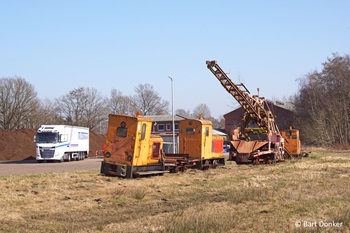
3 of the older locos at Klasmann-Deilmann Vehnemoor standing on the last remains of the track leading the the workshops. Seen in May 2025.
|
Klasmann-Deilmann Sedelsberg (600mm gauge) do not appear to have any peat left in their own fields. Besides the peat from the Griendtsveen fields going to Sedelsberg, there is peat coming in by ship. This is loaded in lorries and taken to the Klasmann-Deilmann unloading point beside the Küsten Kanal at the B401. Here the peat is loaded in narrow gauge wagons and transported back to the works at Sedelsberg. This unique situation will continue for maybe 12 months until the equipment can be changed to allow lorries to be tipped in the yard. This process was not observed on the visit so it is not clear how frequent this is.
Griendtsveen Scharrel, Brinkmann Torfwerk (600mm) was seen to be working normally and their concession appears to be valid for another 4 years.
Werner Koch Ramsloh, Moorkultur Ramsloh (600mm gauge) was confirmed to be working as usual.
Klasmann-Deilmann Edewechterdamm, Werk Vehnemoor, (900mm gauge) This site was confirmed as ceased. By May all the track had been taken up right up to the workshops where a few yards still remained with some locos that had not found new homes yet. During the visit peat wagons were observed being cut up for scrap.
|
Griendtsveen Edewechterdamm (900mm gauge) This works should be in use for a further 6 years or more and some modernisation has taken place at the unloading yard. A trio of locos from Klasmann-Deilmann are now in use here, allowing trains of 20 wagons to be operated. Harvesting is being carried out in a former Klasmann-Deilmann field, south east of Husbäke. Peat is unloaded in the works and is still loaded directly into the Küsten Kanal barges. The railway was found not to be in daily use and may be dependent on when the barges arrive which in the past has been on a couple of specific days of the week.
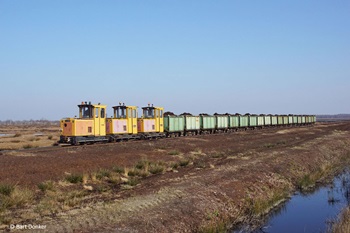
In the above photo the ex-Klasmann-Deilmann locos are seen in use at Griendtsveen Edewechterdamm hauling a loaded train off the moors.
(Posted 05.06.2025 Source: Bart Donker)
|
